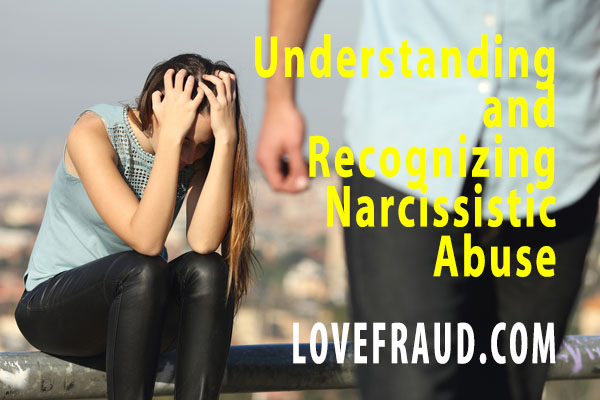
About this course
As clinicians who come in contact with patients complaining of a wide variety of symptoms every day, you may have worked with victims of narcissistic abuse and not recognized the signs. Victims often don’t know they are suffering from narcissistic abuse and instead reach out for help because they have somatic symptoms. Others feel they are not coping with their own lives and present with multiple psychological issues that are inaccurately diagnosed. They have no idea that a toxic relationship is at the source of their despair.
Narcissistic abuse frequently does not look like domestic violence. It is harder to identify because often there are no obvious signs of abuse. The victims may spend years in a vicious cycle of love bombing, isolation and gaslighting, enduring tremendous loss and psychological destruction before they learn the root of their problem. As a clinician, you may be the first person to ever have the opportunity to name and validate the patients’ experiences and get them on the path for help.
Narcissistic abuse is growing in recognition among the psychological healing community, with discussion of the term, “narcissistic victim syndrome” used to describe a cluster of trauma symptoms that are caused by living with someone with narcissistic personality traits.
In this webinar, you will learn the key pattern of narcissistic abuse, common tactics used, how it affects victims, and how to recognize the signs in your clients.
Highlights
- What exactly do we mean by narcissistic abuse?
- The narcissistic abuse cycle, and how it differs from the domestic violence cycle
- Family dynamics when one parent is narcissistic
- Tactics of abuse: gaslighting, projection and rage
- The impacts on the victim
About the instructor
 Tiffany Kettermann, LPC, CADCI, MPA, MA, is a licensed professional counselor and a certified drug and alcohol counselor with a private practice, Health Allies Counseling, in Portland, Oregon.
Tiffany Kettermann, LPC, CADCI, MPA, MA, is a licensed professional counselor and a certified drug and alcohol counselor with a private practice, Health Allies Counseling, in Portland, Oregon.
“We all have our own unique journeys in life,” she says. “Hurt and pain are an inevitable part of that journey. However, I believe we are built for connection and are not meant to be alone, particularly as we face difficult times. A stable and safe relationship with a trusted counselor can be an important part of a client’s journey, helping him or her to feel supported and to arrive at useful and positive solutions.
Ms. Kettermann has a master’s degree in Clinical Mental Health Counseling and a post-graduate certificate in Trauma Response Services from George Fox University. Her training includes working with individuals, groups and families; lifespan development; anxiety and depression; crisis, trauma and abuse; personality disorders; neuropsychology; health psychology; substance abuse; diversity issues; diagnosis and assessment, treatments and interventions. She is a member of the American Counseling Association and the National Coalition Against Domestic Violence.
Cost and credits
The cost for this course is $50 for two hours of instruction. Once you purchase the course, you can view it as often as you want. There is no expiration date.
This course meets the education standards of psychology and counseling professional associations. Contact your professional association to claim credits.
No commercial support was provided to Lovefraud Continuing Education or the instructor for this program.
Learning objectives
This workshop will enable mental health professionals to:
- Define narcissistic abuse
- Identify the pattern of narcissistic abuse
- Identify tactics used in narcissistic abuse
- Identify the cluster of symptoms typical of individuals who have suffered from narcissistic abuse
Program agenda
Instruction — 55 minutes
- Objective 1
- Narcissistic injury
- Early definition of narcissistic abuse
- Narcissistic supply
- Objective 2 – Identify the pattern
- Adult to child abuse cycle
- Adult to adult abuse cycle
- Compare to domestic violence cycle
- Adult to adult narcissistic abuse
- Narcissistic family dynamics
- What is the pattern of narcissistic abuse?
- Step 1: Find narcissistic supply
- Step 2: Engage in the three-step process
- Pull the empathetic person into a trauma bond
- Trauma bonding
Break — 5 minutes
Instruction — 50 minutes
- Objective 3 – Identify tactics used
- Gaslighting
- Projection
- Narcissistic rage
- Other tactics of narcissistic abuse
- Objective 4 – Identify the cluster of symptoms typical of individuals who have suffered from narcissistic abuse
- Who is in distress?
- How to identify clusters of symptoms typical for victim of narcissistic abuse
- What does it look like (in a therapy setting)
- How does it present in the health care system
- Impacts of narcissistic abuse
- Impacts of chronic fight or flight
- Impacts of disassociation
- Effects of gaslighting
- Clusters of trauma symptoms
- What victims are struggling with when they make it to the therapy setting
- How to help the victim identify what the problem really is
Questions and answers — 10 minutes
Risks and Limitations
- The accuracy and utility of the statements included in this presentation are based on referenced materials from reliable sources that are accessible and obtainable by all.
- The limitation of the content presented herein is that the results of execution have not been measured, therefore, expectation of outcome is not predictable.
- It is presumed that professionals executing the guidelines presented herein will apply such holding to the precise standards of their professional code of ethics, to reduce risk of ethical violations. As in all therapeutic interventions that may provoke emotional triggering, the professional may be required to perform risk assessment for suicidality, homicidality or other incident requiring emergency psychiatric services.
Here’s a preview of this course:
Narcissistic abuse may not be violent — but it can be just as damaging as violence to the victim. You’ll learn the cycle of narcissistic abuse, the tactics employed such as love bombing, isolation and gaslighting, and how it all affects the victims.
Customer reviews
Add your review — click and scroll down
Understanding and Recognizing Narcissistic Abuse – $50


Super clear and helpful. Gave some wonderful context to a dynamic I am experiencing with a client in my practice. Really appreciate your knowledge and experience in this terrain!
This was an excellent course. The best one I’ve taken so far. I’m not a therapist however Donna recommended this to me to help me connect the dots of how being an abused child results in how I end up in relationships with sociopaths over and over again. This course connected so many dots for me. It even resolved some issues therapists have been trying to resolve for years. I got answers to many questions I’ve been searching for for a long long time. Thank you very much Donna!
I will be more attuned to looking for symptoms. The Course covered a significant amount of information regarding a topic that is not taught at Higher Education levels. I learned that the prevalence of victims of Narcissistic abuse is much greater than believed. I will be more attuned to looking for symptoms of abuse as well as wrongful diagnosis of other Psychiatric Disorders